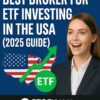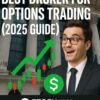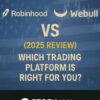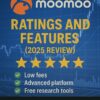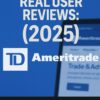Diverging Market Indicators Reflect Heightened Risk Aversion
Geopolitical and Policy Concerns Shape Defensive Strategies
The post-election surge in U.S. stock markets has failed to quell investor anxiety, with many bracing for potential volatility driven by geopolitical tensions and anticipated policy shifts under Donald Trump’s administration. While the Cboe Volatility Index (VIX) suggests a calm market environment, other indicators like the Cboe Skew Index and the Nations TailDex Index tell a different story, revealing heightened demand for crash protection.
Market Indicators Show Mixed Sentiment:
- The Cboe Volatility Index, often called the “fear gauge,” remains subdued, reflecting minimal near-term anxiety.
- The Cboe Skew Index, which measures the risk of large, unexpected market moves, has reached a two-month high, signaling investors’ concerns about extreme scenarios.
- The Nations TailDex Index, which tracks the cost of hedging against significant market shifts, has doubled from its post-election low, underscoring the demand for defensive positions.
This divergence reflects what RBC Capital Markets calls fears of “fat tail risks,” scenarios with low probability but severe consequences, such as escalated geopolitical conflicts or disruptive economic policies.
Hedging Costs and Strategies Surge:
- According to Susquehanna Financial Group, demand for market sell-off protection has hit a five-year high.
- The VIX three-month call skew, a measure of hedging against future volatility, has soared as investors brace for downturns.
- These moves suggest that institutional and retail investors are increasingly willing to pay a premium to guard against sharp declines.
Geopolitical and Economic Risks:
Global instability is adding fuel to investor caution:
- Geopolitical Tensions: Ongoing conflicts in Ukraine and the Middle East, including the Israel-Hamas crisis, amplify uncertainties.
- Policy Shifts: UBS warns that Trump’s proposed tariffs could disrupt global trade, reigniting volatility similar to past tariff-driven market shocks.
- Inflation Worries: Concerns about the Federal Reserve’s ability to manage interest rates in an environment of potential inflation also loom large.
Conclusion:
Despite a strong post-election rally, investors remain deeply uneasy about potential market disruptions. Rising demand for hedging tools reflects a defensive stance, driven by the complex interplay of geopolitical risks, policy uncertainties, and inflationary pressures. The divergence between market calm, as indicated by the VIX, and the surging cost of crash protection highlights this tension. As global and domestic developments unfold, the focus will be on whether the Fed, policymakers, and market participants can navigate these risks to maintain stability.






